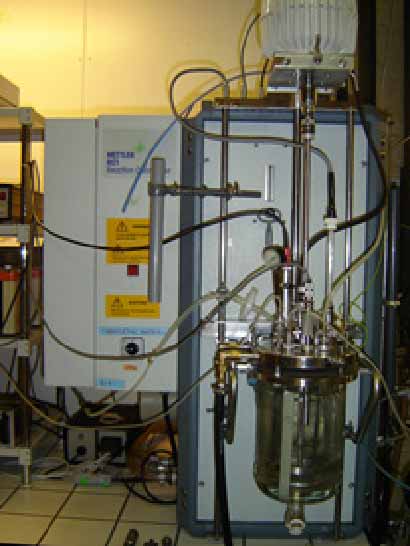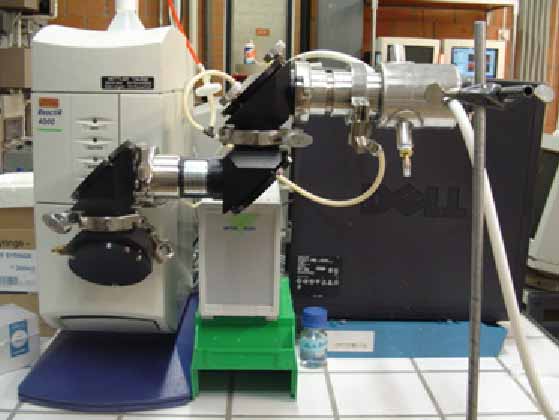P. Gujral, S. Valentinotti, M. Amrhein and D. Bonvin
Completed project (2000-2002, 2006-2009)
This project focused on the calibration, monitoring and control of bioprocesses. A first research campaign demonstrated the possibility of monitoring and controlling bioreactors using a calibration model based on mid-IR spectra and Partial Least-Squares Regression (PLSR). In a second research campaign, real-time techniques to maintain robust calibration models and to perform data reconciliation were elaborated.
Calibration, Monitoring and Control of Bioprocesses
P. Gujral, S. Valentinotti, M. Amrhein and D. Bonvin (2000-2002)
 In this work, a strategy based on mid-IR spectroscopy for the monitoring and control of a bioreactor was developed. The calibration of mid-IR spectra using Partial Least-Squares Regression (PLSR) resulted in the simultaneous estimation of glucose and lactate in animal cell cultures, and glucose, ethanol, glycerol, acetic acid, and biomass in fermentations. The effect of metabolism-induced concentration correlations in the mid-IR calibration samples of Chinese hamster ovary cell cultures on the performance of PLSR models was also investigated. The validity of all established models could be predicted a priori by computing the space inclusion and observer conditions.
In this work, a strategy based on mid-IR spectroscopy for the monitoring and control of a bioreactor was developed. The calibration of mid-IR spectra using Partial Least-Squares Regression (PLSR) resulted in the simultaneous estimation of glucose and lactate in animal cell cultures, and glucose, ethanol, glycerol, acetic acid, and biomass in fermentations. The effect of metabolism-induced concentration correlations in the mid-IR calibration samples of Chinese hamster ovary cell cultures on the performance of PLSR models was also investigated. The validity of all established models could be predicted a priori by computing the space inclusion and observer conditions.
Calibration and Data Reconciliation in Bioprocesses
P. Gujral, M. Amrhein and D. Bonvin (2005-2009)
 This work showed how the robustness of calibration models and their resistance to process/instrumental drifts could be maintained in single-beam IR instruments by planned spikes of analytes injected periodically into a fermentation reactor. Difference spectra could be used to update in real-time calibration models based on dynamic orthogonal projections. Real-time data reconciliation of concentration estimates of process analytes and biomass was also investigated. FT-IR spectroscopy for predicting metabolite concentrations was used in parallel with dielectric spectrometry for predicting biomass concentrations. To compensate for the process/instrumental drifts, predicted metabolite and biomass concentrations, along with off-gas analysis and base addition measurements, were reconciled in real-time based on closure, elemental balances and non-negativity constraints.
This work showed how the robustness of calibration models and their resistance to process/instrumental drifts could be maintained in single-beam IR instruments by planned spikes of analytes injected periodically into a fermentation reactor. Difference spectra could be used to update in real-time calibration models based on dynamic orthogonal projections. Real-time data reconciliation of concentration estimates of process analytes and biomass was also investigated. FT-IR spectroscopy for predicting metabolite concentrations was used in parallel with dielectric spectrometry for predicting biomass concentrations. To compensate for the process/instrumental drifts, predicted metabolite and biomass concentrations, along with off-gas analysis and base addition measurements, were reconciled in real-time based on closure, elemental balances and non-negativity constraints.
Keywords
In situ identification of bioprocess; Real-time monitoring; NIR/mid-IR spectroscopy; Dielectric spectroscopy; Online data calibration and reconciliation; Dynamic orthogonal projections; Elemental balances
Publications
[epfl_infoscience url=”https://infoscience.epfl.ch/publication-exports/2196/?ln=en”]